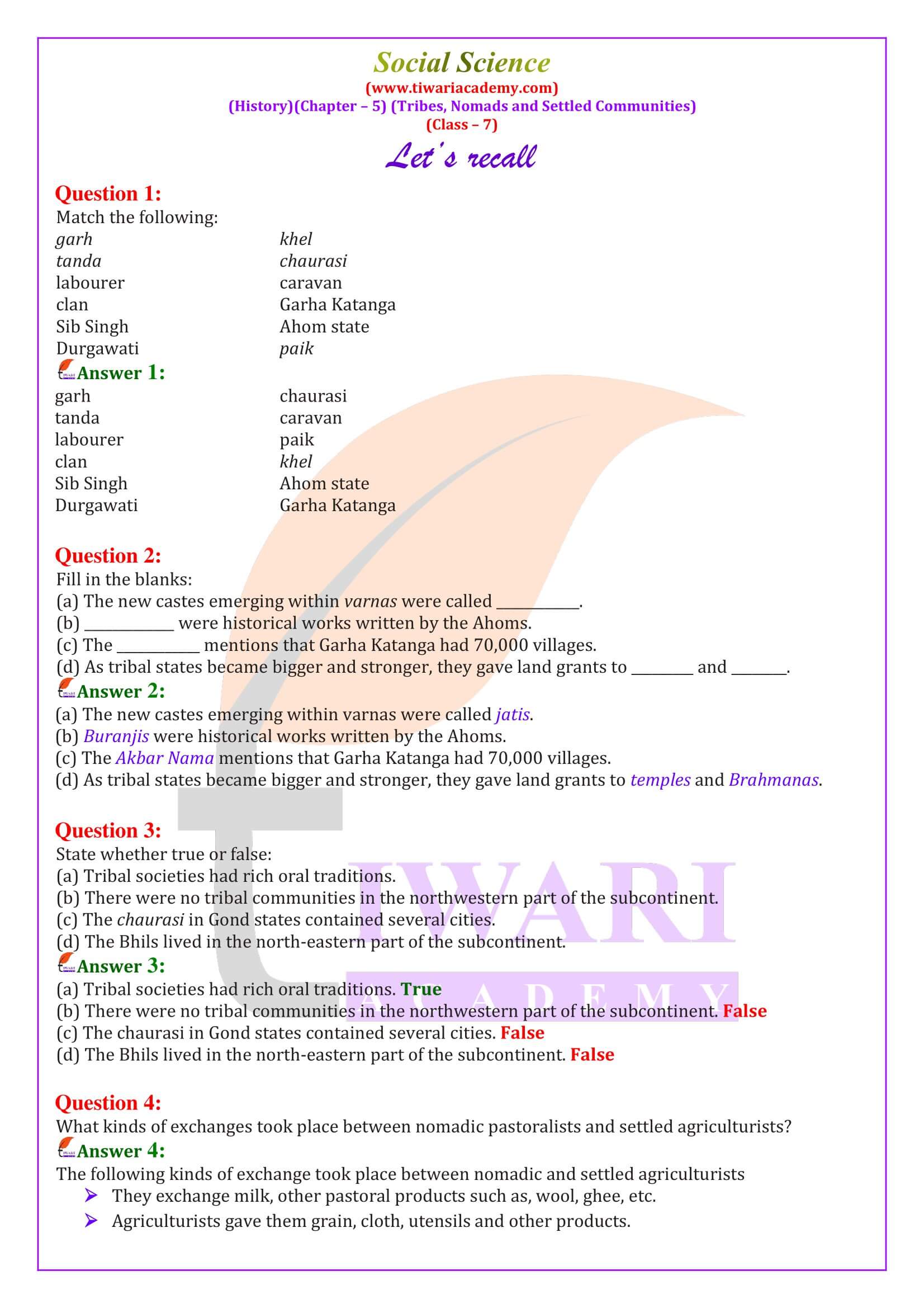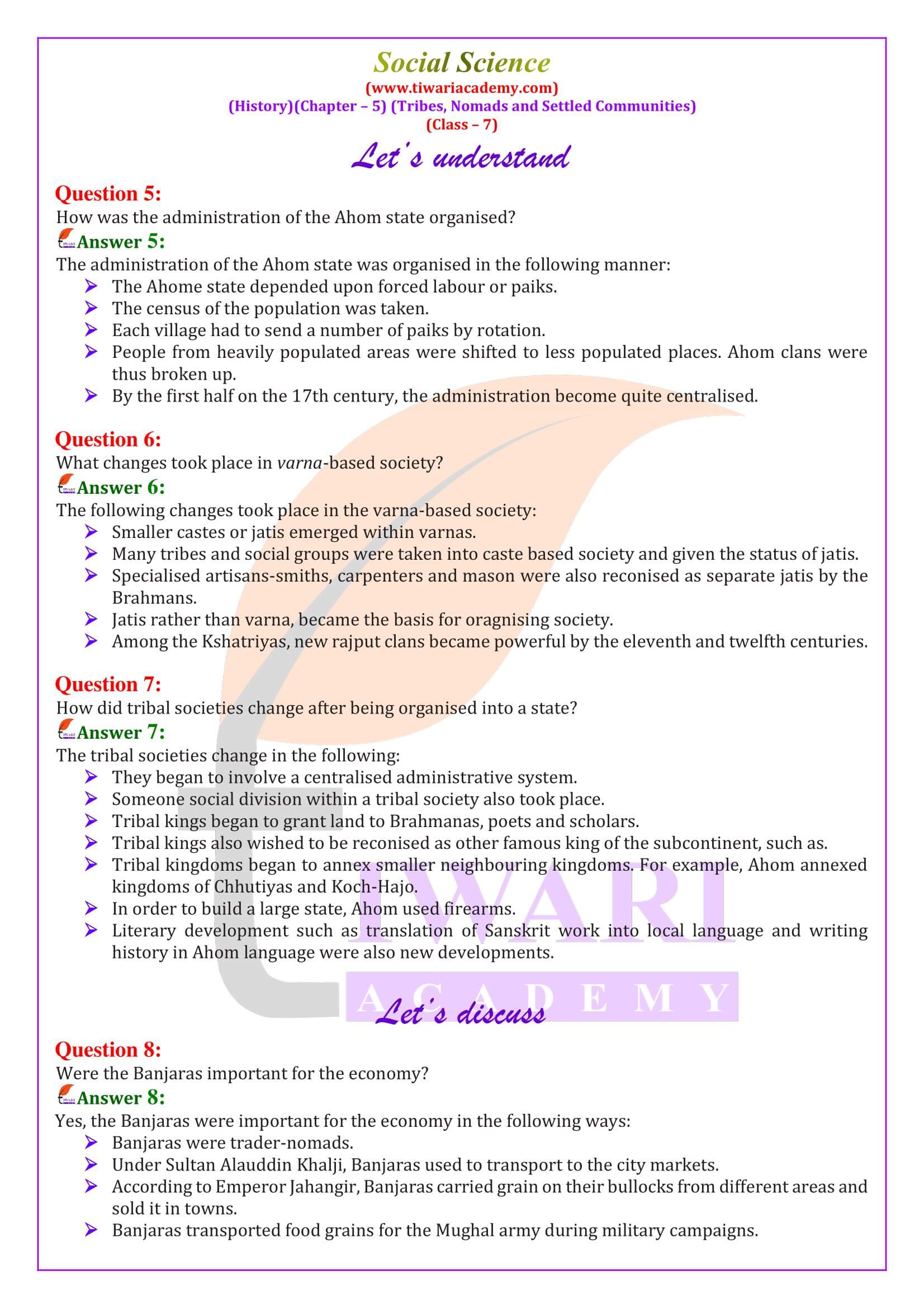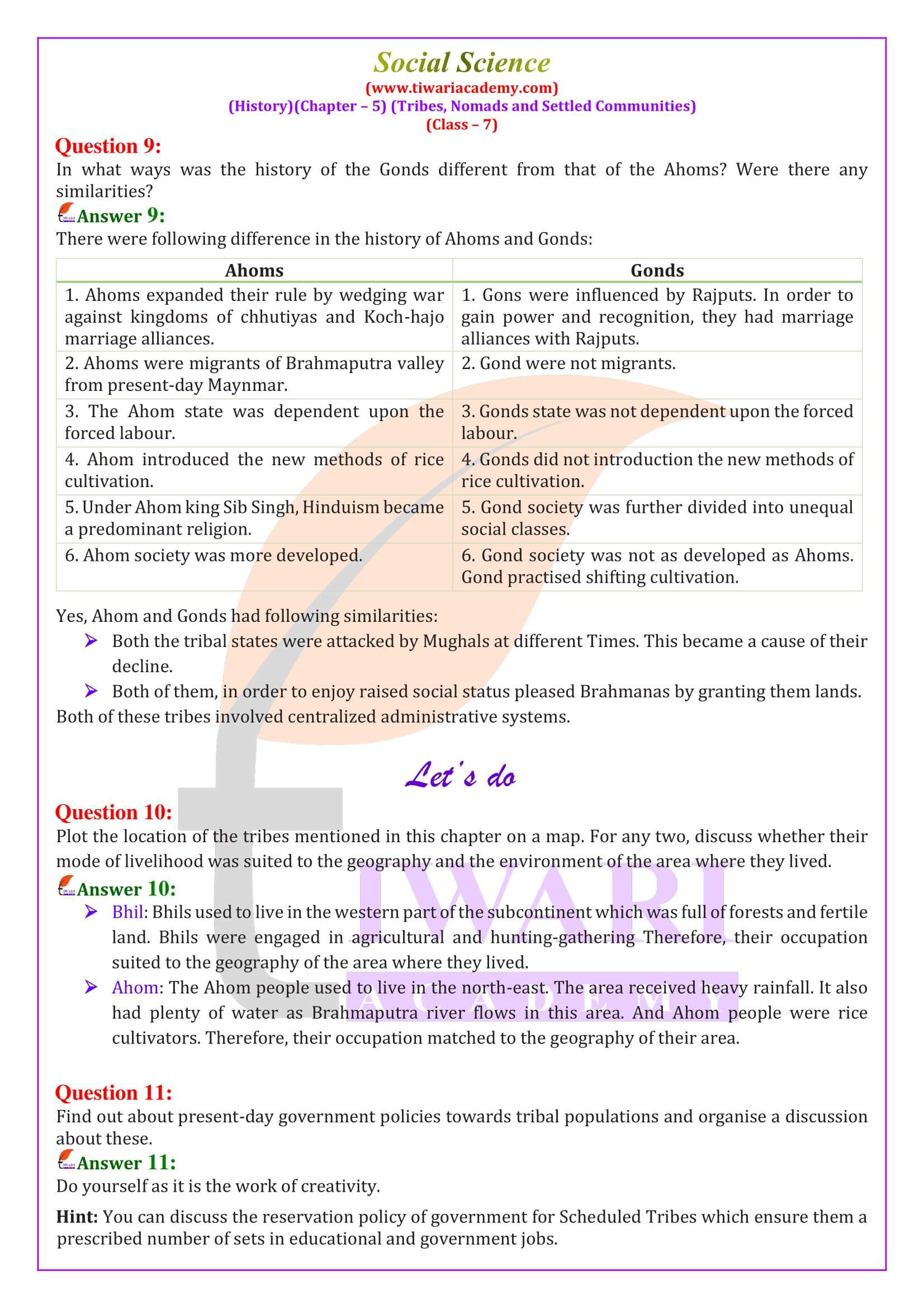NCERT Solutions for Class 7 Social Science History Chapter 5 Tribes, Nomads and Settled Communities in English Medium and Hindi Medium free to View online or download in PDF format for 2024-25. Download NCERT Solutions 2024-25 and Offline Apps based on latest NCERT Books on Updated CBSE Syllabus 2024-25.
NCERT Solutions for Class 7 Social Science History Chapter 5
Class 7th History Chapter 5 Solution in Hindi and English Medium
| Class: 7 | History |
| Subject: | Social Science |
| Chapter 5: | Tribes, Nomads and Settled Communities |
| Academic Session: | 2024-25 |
| Medium: | Hindi and English Medium |
Class 7 History Chapter 5 Question Answers
CBSE NCERT Solutions for Class 7 Social Science History Chapter 5 Tribes, Nomads and Settled Communities, in updated format for the new academic session 2024-25, is given here. Download 7th NCERT Solutions apps 2024-25 and PDF solutions to use offline for new session 2024-25.
Class 7 History Chapter 5 in English Medium
Important Notes on 7th History Chapter 5
Class 7 History Chapter 5 Extra Questions
Who were Tribal People?
Tribal people were found in almost every region of the subcontinent. The area and influence of a tribe varied at different points of time. Some powerful tribes controlled large territories. In Punjab, the Khokhar tribe was very influential during the thirteenth and fourteenth centuries. Later, the Gakkhars became more important. In Multan and Sind, the Langahs and Arghuns dominated extensive regions before they were subdued by the Mughals.
Contemporary historians and travellers give very scanty information about tribes. A few exceptions apart, tribal people did not keep written records. Presentday historians have started using such oral traditions to write tribal histories.
Why were Beyond Big Cities: Tribal Societies?
There were, however, other kinds of societies as well. Many societies in the subcontinent did not follow the social rules and rituals prescribed by the Brahmanas. Nor were they divided into numerous unequal classes. Such societies are often called tribes. Many large tribes thrived in different parts of the subcontinent. They usually lived in forests, hills, deserts and places difficult to reach. Sometimes they clashed with the more powerful caste-based societies. In various ways, the tribes retained their freedom and preserved their separate culture.
Nomads and Mobile People
Nomadic pastoralists moved over long distances with their animals. They lived on milk and other pastoral products. They also exchanged wool, ghee, etc., with settled agriculturists for grain, cloth, utensils and other products.
The Banjaras were the most important tradernomads. Their caravan was called tanda. Sultan Alauddin Khalji (Chapter 3) used the Banjaras to transport grain to the city markets. Emperor Jahangir wrote in his memoirs that the Banjaras carried grain on their bullocks from different areas and sold it in towns. They transported food grain for the Mughal army during military campaigns. With a large army there could be 100,000 bullocks carrying grain.
Class 7 Social Science – History Chapter 5 – Important Questions
What kinds of exchanges took place between nomadic pastoralists and settled agriculturists?
The following kinds of exchange took place between nomadic and settled agriculturists They exchange milk, other pastoral products such as, wool, ghee, etc. Agriculturists gave them grain, cloth, utensils and other products.
How was the administration of the Ahom state organised?
The administration of the Ahom state was organised in the following manner: The Ahome state depended upon forced labour or paiks. The census of the population was taken. Each village had to send a number of paiks by rotation. People from heavily populated areas were shifted to less populated places. Ahom clans were thus broken up. By the first half on the 17th century, the administration become quite centralised.
What changes took place in varna-based society?
The following changes took place in the varna-based society: Smaller castes or jatis emerged within varnas. Many tribes and social groups were taken into caste based society and given the status of jatis. Specialised artisans-smiths, carpenters and mason were also reconised as separate jatis by the Brahmans. Jatis rather than varna, became the basis for oragnising society. Among the Kshatriyas, new rajput clans became powerful by the eleventh and twelfth centuries.
How did tribal societies change after being organised into a state?
The tribal societies change in the following: They began to involve a centralised administrative system. Someone social division within a tribal society also took place. Tribal kings began to grant land to Brahmanas, poets and scholars. Tribal kings also wished to be reconised as other famous king of the subcontinent, such as. Tribal kingdoms began to annex smaller neighbouring kingdoms. For example, Ahom annexed kingdoms of Chhutiyas and Koch-Hajo. In order to build a large state, Ahom used firearms. Literary development such as translation of Sanskrit work into local language and writing history in Ahom language were also new developments.
Were the Banjaras important for the economy?
Yes, the Banjaras were important for the economy in the following ways: Banjaras were trader-nomads. Under Sultan Alauddin Khalji, Banjaras used to transport to the city markets. According to Emperor Jahangir, Banjaras carried grain on their bullocks from different areas and sold it in towns. Banjaras transported food grains for the Mughal army during military campaigns.
Plot the location of the tribes mentioned in this chapter on a map. For any two, discuss whether their mode of livelihood was suited to the geography and the environment of the area where they lived.
Bhil: Bhils used to live in the western part of the subcontinent which was full of forests and fertile land. Bhils were engaged in agricultural and hunting-gathering Therefore, their occupation suited to the geography of the area where they lived. Ahom: The Ahom people used to live in the north-east. The area received heavy rainfall. It also had plenty of water as Brahmaputra river flows in this area. And Ahom people were rice cultivators. Therefore, their occupation matched to the geography of their area.
Find out more about present-day nomadic pastoral groups in the subcontinent. What animals do they keep? Which are the areas frequented by these groups?
Some of the main present-day momadic pastral groups of the subcontinent are Gujjars (J & K), Gaddis (Himachal), Bhiotiyas, Monpas (north-east), Raikas (Rajasthan), Banjaras (Central India), Dhangars (Maharashtra) and Maldharis (Gujarat). These Pastoralists keep sheep, buffaloes, camels, etc.






